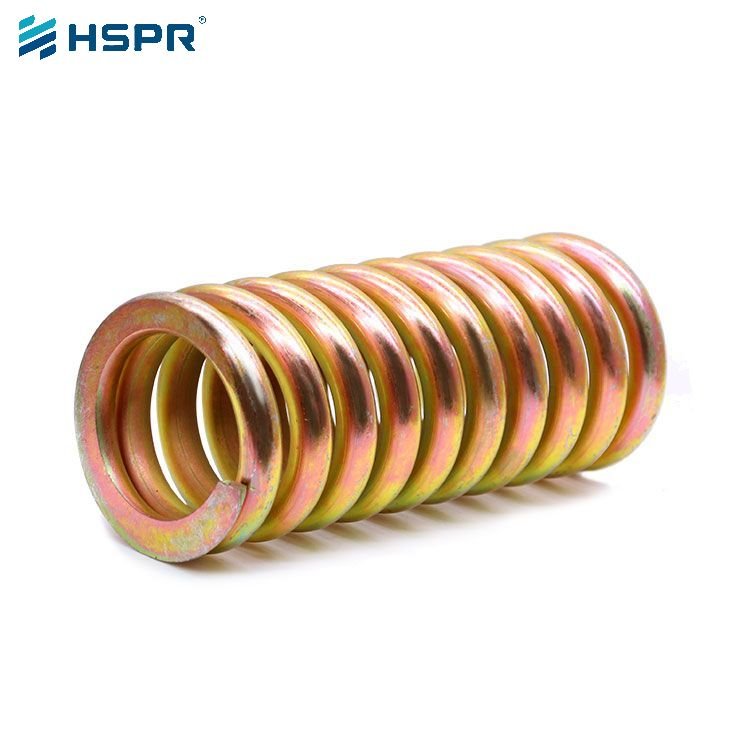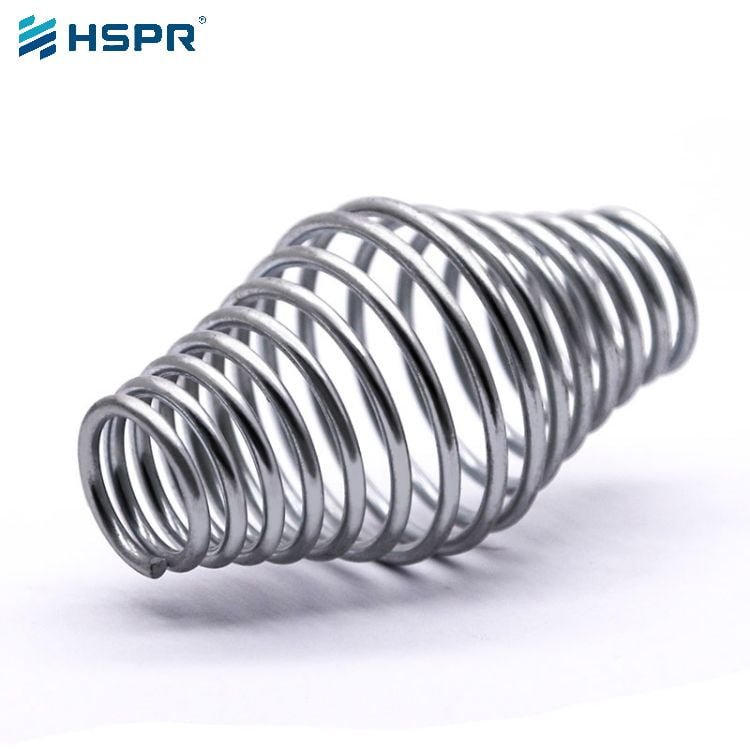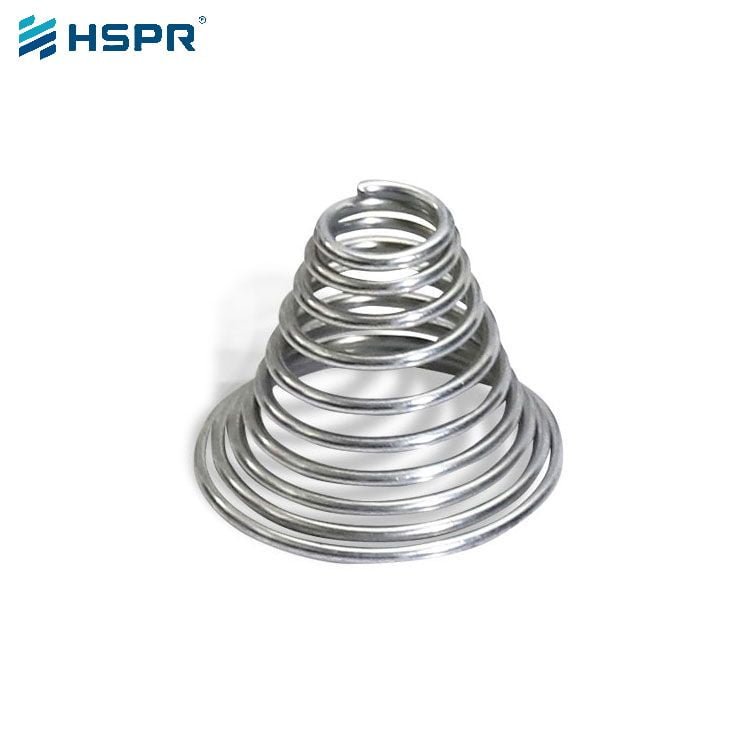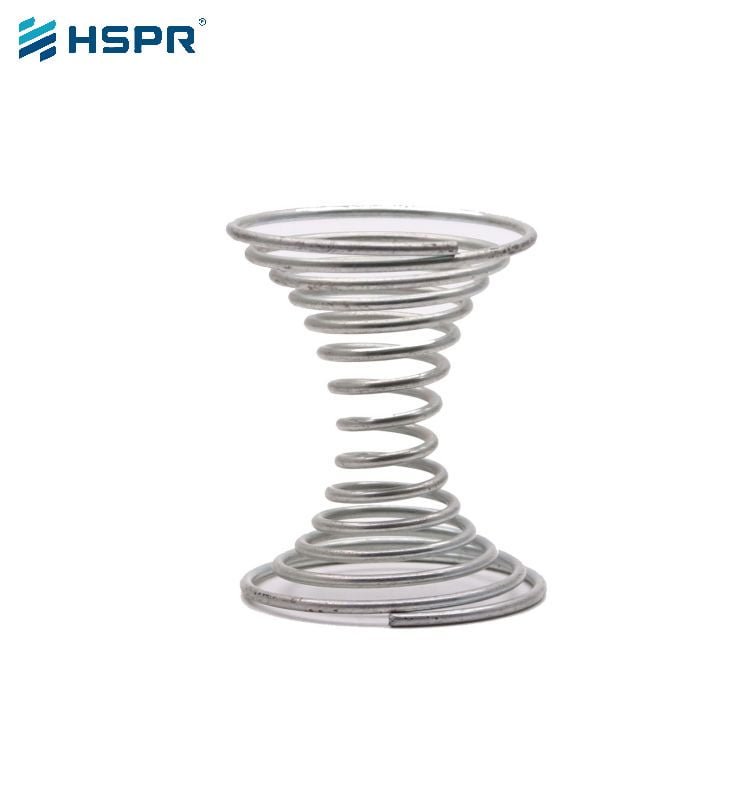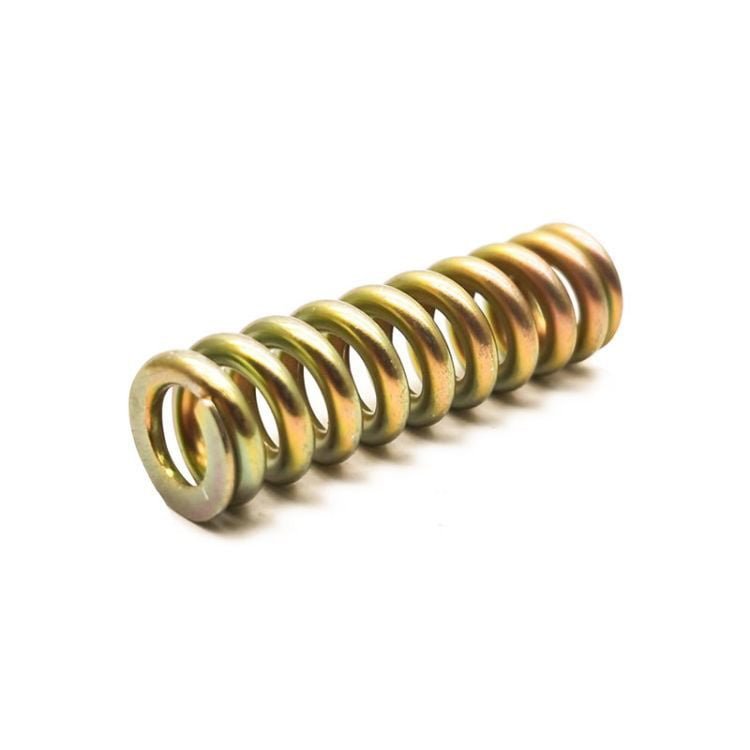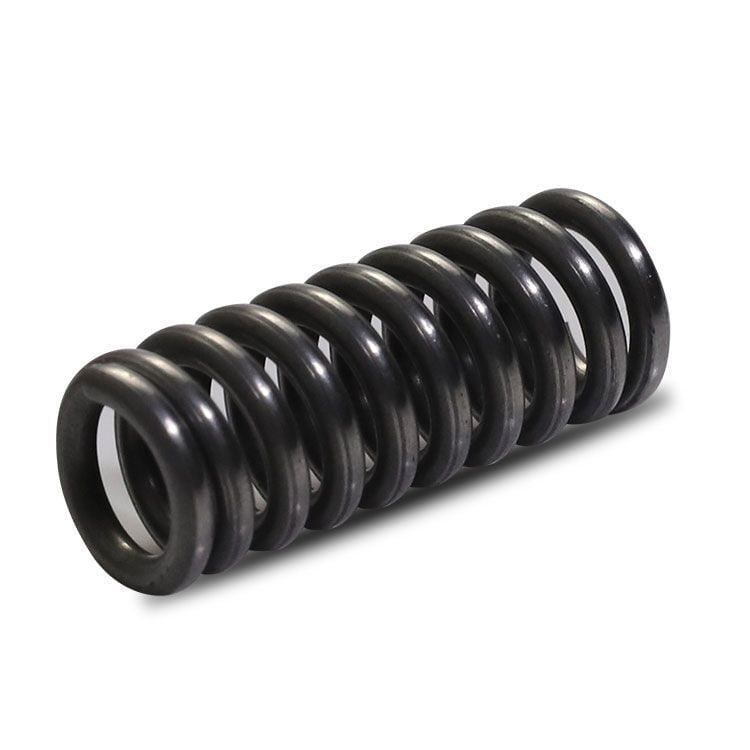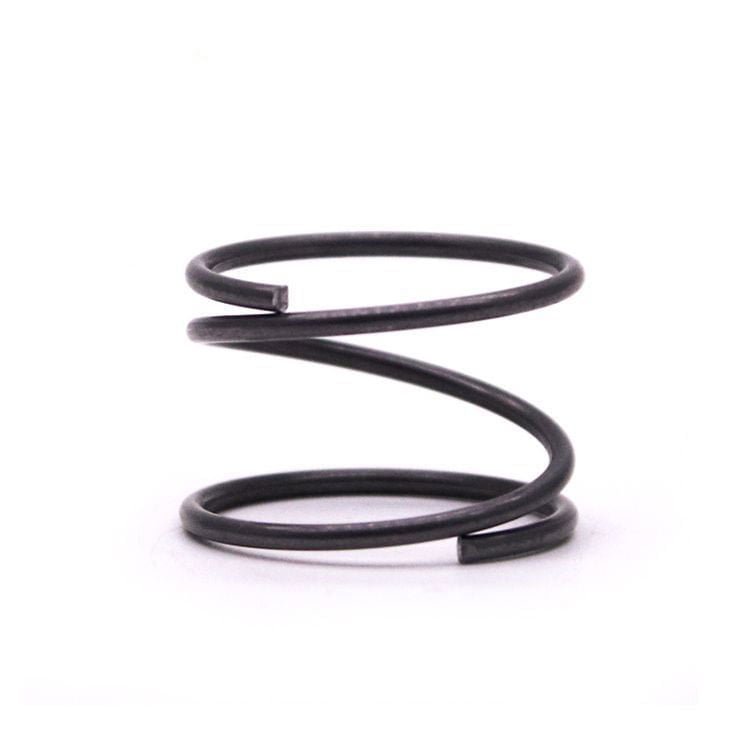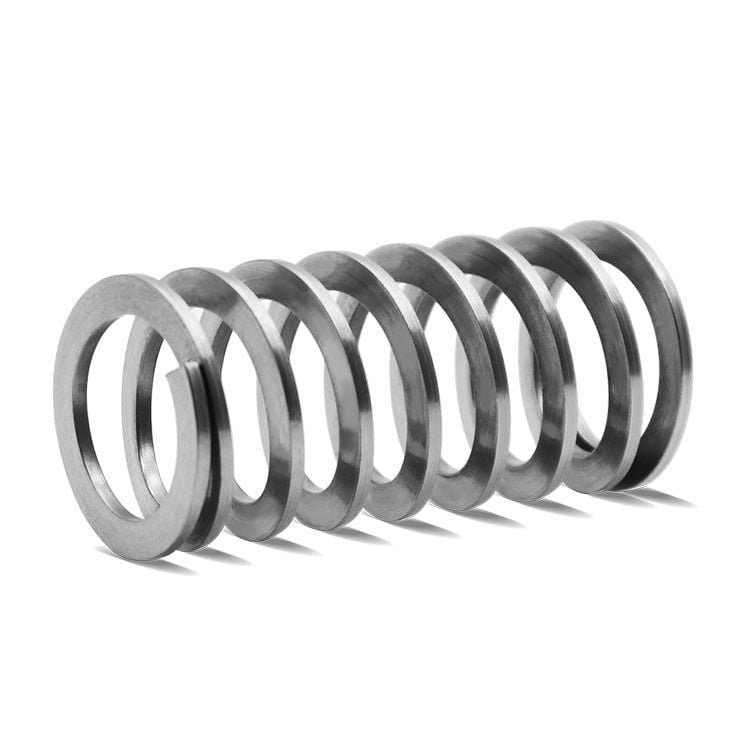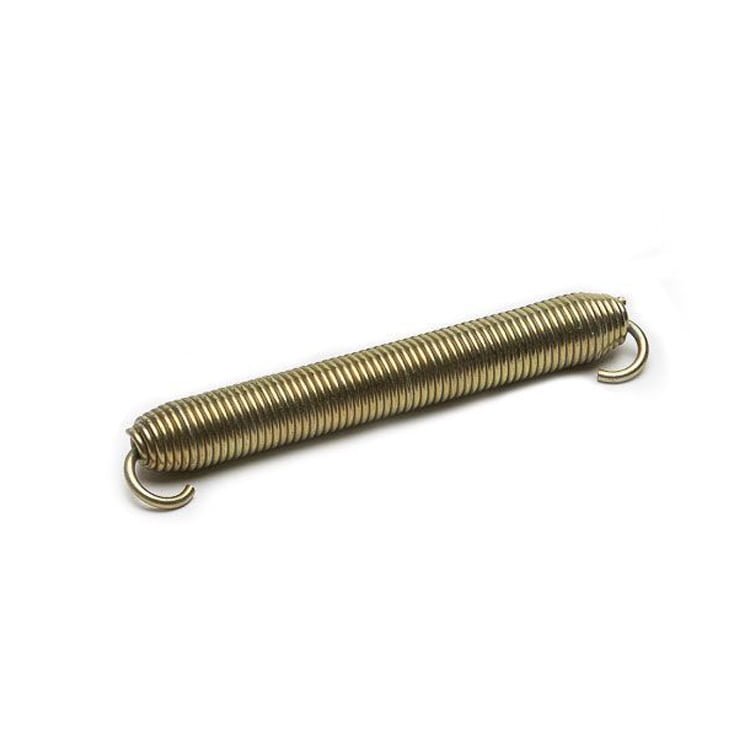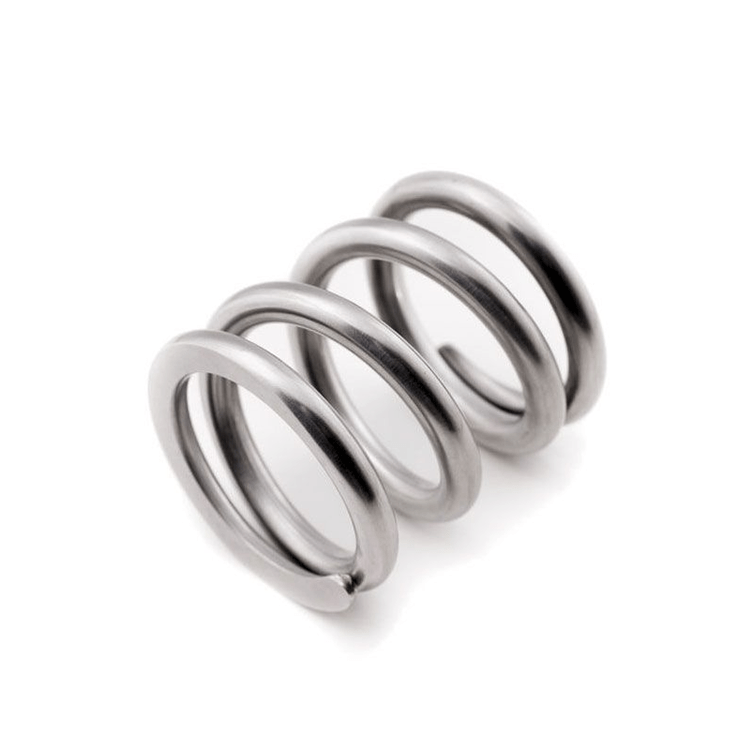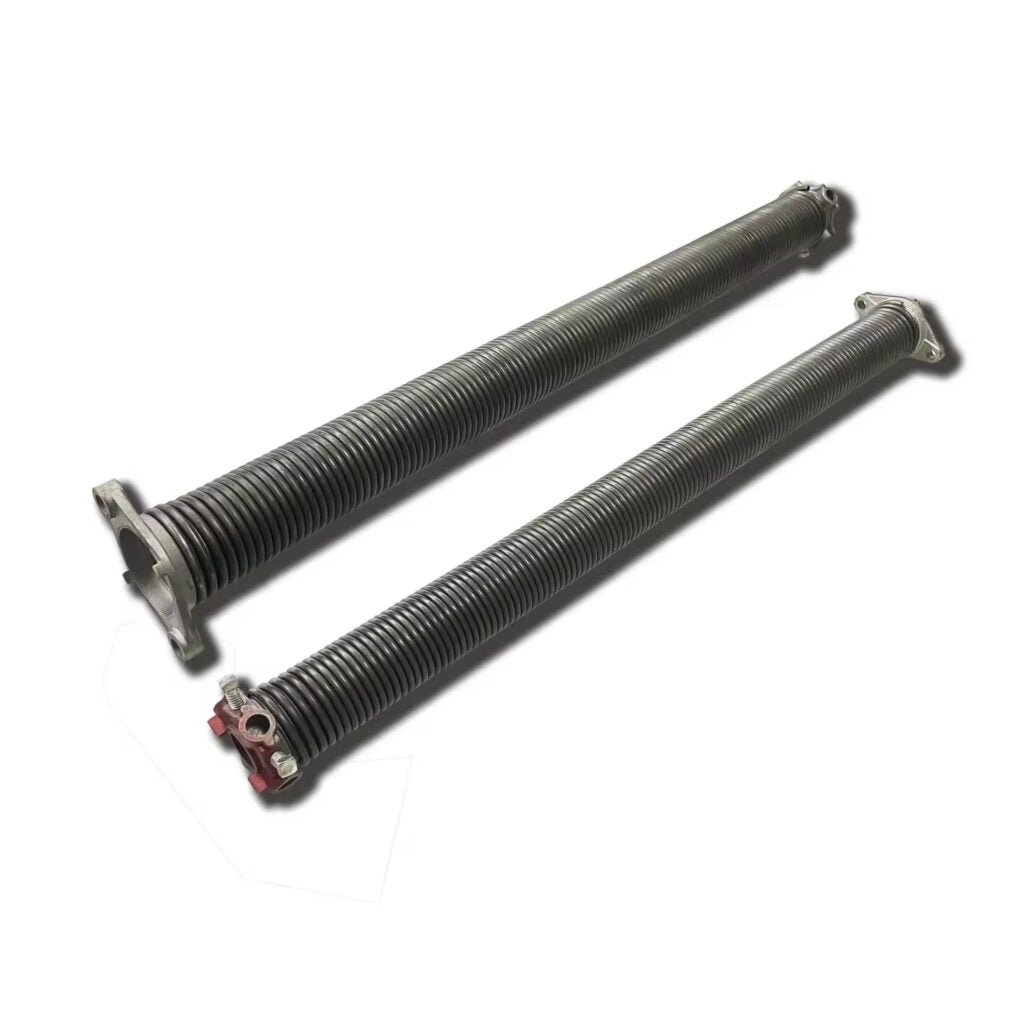Types of compression spring
There are many types of compression springs on the market, and each type has its own different characteristics to meet the different functional needs of different customers. Although a specific application may require compression forces, the types of compression spring affects how the spring interacts and behaves in a particular mechanism.
Currently, compression springs are the most common type of spring in all mechanical components, and they are identified by cylindrical, open-circle, and helical shapes. Unlike other springs, its coils are not in contact. When a compressive force or load is applied, they store and release energy, and when released, they return to their original length. Compression springs are usually mounted in slots or shafts for applications in different industries.

There are several common types of compression springs:
1.Closed-End spring
Since the last coil is closed, the closed ends can stand vertically when the spring is placed on a horizontal surface. They are the most popular and economical terminals because they do not require any form of additional machining, closed compression springs will require a shaft or rod to provide additional support.
2.Open-End spring
The open compression spring is the least common type of compression spring, because the open spring cannot stand or remain stable without the help of a bar or shaft. All the coils are open, there is a pitch between them, and the open compression spring is used where it is necessary to avoid increasing the solid height of the spring.
3.Conical compression springs
The shape of a conical compression spring is formed by a reduction in the diameter of the coil from one end of the spring to the other, in other words, one end of the spring has a smaller diameter than the other end. Conical compression springs provide variable spring rates and are designed to accommodate uneven or non-linear loads.
4.Hourglass (Concave) Compression Springs
Concave compression springs are a tapered design with a relatively small central diameter, a shape that allows them to provide progressive or variable spring rates, making them suitable for applications that require soft initial compression, followed by increased resistance.
5.Barrel compression spring
The center diameter of the barrel compression spring is larger than the end diameter and is easy to identify. The spring is designed in a barrel shape to carry higher load capacity in a limited space.
6.Variable pitch compression spring
These types of compression springs have varying coil spacing in length, and this design allows for progressive or variable spring rates, making them suitable for applications with changing load requirements.
7.tiny compression spring
These are very small compression springs designed for use in compact devices or applications where space is limited, such as mobile phones. They come in a variety of shapes and sizes to meet specific requirements.
8.Variable diameter compression spring
In these springs, the wire diameter varies along the length of the coil. This design provides a controlled change in stiffness, i.e. the spring rate.
The choice of the types of compression spring depends on many factors such as load, deflection, space constraints and the desired spring characteristics. At HSPR, our engineers and designers can help you choose the right type of compression spring to ensure that the spring operates efficiently and reliably as intended. According to the materials you need, according to your specifications, we can provide you with a customized compression spring design to meet your application requirements. Contact us today to discuss a customized solution to meet your needs.
Address
140 meters north of the intersection of Xueyuan Road and Textile Road, Huixian County, Xinxiang City, China

